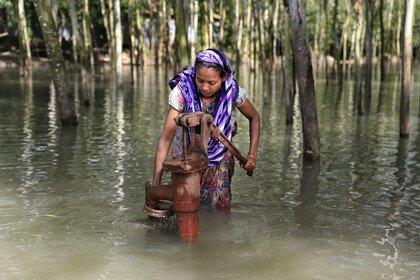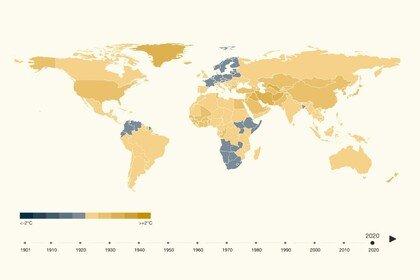
Researching cholera
What work is underway to prevent and treat cholera?
Bangladesh is one of the countries worst affected by cholera. Nearly half of its population of 158 million people live in areas where cholera is a constant and substantial risk, so it’s not surprising that the International Centre for Diarrhoeal Disease Research, Bangladesh (based in Dhaka) has been at the centre of much of the most promising research into cholera science for years.
Its director, Professor John Clemens, led the team that developed Shanchol, a killed bivalent cholera vaccine targeted to both O1 and O139 serogroups – the two that cause cholera. Shanchol is one of two vaccines stockpiled by the World Health Organization in case of epidemics. Last year it was administered by the Pan-American Health Organization to 200,000 Haitians in three provinces.
When I asked Clemens, in a Skype call between Leeds and Dhaka, if cholera has been his life’s work, he laughed. “I’m an infectious disease specialist and epidemiologist, but yes, I suppose so.” He has seen a huge change in how cholera has been treated. “Decades past it was a paradox. Cholera is one of the most understood bacterial pathogens from a biological point of view, yet rates of cholera weren’t declining.”
The prospects for controlling cholera changed in the 1980s when Jan Holmgren developed Dukoral, a vaccine comprising “killed whole-cell vaccine V. cholerae O1 in combination with a recombinant B-subunit of cholera toxin (WC/rBS)”, to give it the WHO description (it’s the other vaccine in the WHO stockpile).
Dukoral is more expensive than Shanchol (about $6 a dose, compared to $1.85) and slightly more complicated to administer (part of the vaccine needs to be mixed with clean water, whereas Shanchol can be drunk straight from a vial). In a large field study in Kolkata, India, Shanchol was shown to be about 65 percent protective over five years. In addition, if Shanchol could be given in a single dose, rather than two doses two weeks apart, it would be even more useful in acute epidemic situations like Haiti’s. Trials so far have administered two doses, but Clemens is hopeful that a single-dose regimen is possible; research from a recent trial will be submitted for publication soon.
The problem, as with cholera itself, is a lateral one. The vaccine works, but Shantha Biotechnics – currently the only manufacturer – can’t keep up with demand. A Korean supplier has licensed the vaccine locally and is awaiting WHO prequalification (certification that the vaccine is of a high enough standard for UN agencies to buy it), and Clemens is hopeful that the Bangladeshi pharmaceutical firm Incepta will also start production.
And what about rice? The work of Yoshikazu Yuki and a team at the University of Tokyo, who bioengineered rice into a cholera vaccine delivery medium, received loud media coverage last year (although their breakthrough dates back to 2007). Cholera toxin consists of six protein subunits: one A subunit and five B subunits. The engineered rice – which has the brand name ‘MucoRice’ – contains B subunits. For Clemens, that makes MucoRice important, but “it wouldn’t be sufficient in itself” since it would provide immunity only to cholera toxin and not to the cell wall of the bacterium, immunity to part of which is most important for protection.
Rice could play a part in cholera treatment, as well as prevention: researchers Melanie Blokesch and Andrea Rinaldo at Lausanne’s Swiss Federal Institute of Technology (EPFL) believe replacing glucose in oral rehydration therapy with rice powder can reduce cholera’s toxicity by 75 percent. When cholera bacteria were grown with different sugars and starches derived from potatoes and rice, their gene activity increased with glucose but was decreased by the starch.
“Of course, we’re not saying ‘stop doing oral rehydration therapy with glucose right away’ because it works so well,” Blokesch said in a press release last year. “Still, the data suggests that the regimen can be significantly improved, and that the community needs to start discussing this possibility again – especially in areas endemic to cholera.”
At the University of Washington in St Louis, meanwhile, a team led by Jeff Gordon and including researchers from the International Centre for Diarrhoeal Disease Research in Dhaka recently reported intriguing data about how the gut microbiome responds to a cholera invasion. The bacteria species Ruminococcus obeum, for example, multiplies in response to cholera and is also found in healthy children. This may mean that these gut bacteria could be mined to restrict cholera.
Investigating the role of gut flora in disease prevention, and even in cholera prevention, is not new: in the 19th century the Russian scientist Ilya Metchnikov deliberately swallowed Vibrio cholerae to research why some people got sick with cholera and some didn’t, and what intestinal flora may have to do with it. When he didn’t get sick but another member of his lab who swallowed cholera nearly died, he examined their respective gut flora under a microscope, finding that some flora impeded cholera and some made it flourish.
Back in the world of vaccines, Clemens is keeping a keen eye on Jan Holmgren’s efforts to create a cholera vaccine based on a hybrid strain. “Shanchol is a mixture of several cholera strains, but the use of multiple strains from the production perspective increases cost. One way to reduce that cost is to create a genetic hybrid cholera strain, from [serotypes of the El Tor strain of cholera] Ogawa and Inaba, that can be given as an inactive vaccine.” Clemens calls this “an upstream development”, but one with downstream and practical use.
Downstream, upstream, sideways: is cholera finally getting the attention it deserves, from all angles? Clemens credits the support of the Gates Foundation for helping to change the scientific landscape. “In past eras, there was elegant science but very light application. Now things are translated into practice; there is a real emphasis on developing vaccines and getting them into people. I think the Gates Foundation has been critical.”
There are still knowledge gaps. Unlike other vaccinations, a cholera vaccine can’t only be given to infants because cholera can attack anyone. The questions of how best to deliver the vaccine in a public health or disaster setting are still being answered. “These are major issues that are really practical but require research to get credible answers,” says Clemens. “But [as a research area] it’s not as appealing as the vaccine discovery and development. There is a risk of thinking that just because we have a clinically licensed vaccine, the deal is done. Cholera remains as much of a challenge to public health today as it ever was.”
This article first appeared on Mosaic in July 2015.

